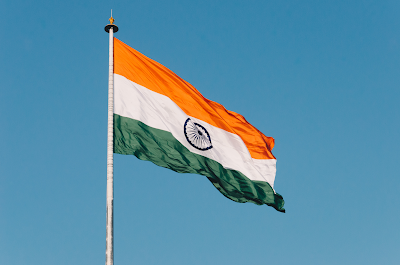
HISTORY OF REPUBLIC DAY IN INDIA
Republic Day is a day to remember when the Constitution of India officially came into force on January 26, 1950. This historical act formally transitioned India to become an independent republic and hence it is celebrated on January 26 every year.
INDIAN FLAG
How is India's Republic Day Celebrated?
Initially, it was held in Red Fort, the National Stadium, then in Kingsway Camp, and then in Ramlila ground. Finally in 1955 Rajpath was chosen as the permanent venue. This was the first Republic Day parade. The members of the Constituent Assembly also adopted the National Anthem – Jana Gana Mana – on 24 January 1950.
The main event for the holiday is a massive parade held in the capital of New Delhi, which includes cultural, historical, and military displays. The parade is preceded by the prime minister laying a wreath at the Amar Jawan Jyoti — an arched war memorial — and taking a moment of silence to commemorate fallen soldiers.
Smaller parades, cultural programs, and public celebrations, and private parties take place throughout the country, like most businesses, schools, and government offices are closed. The festivities officially come to a close on January 29 with the Beating Retreat Ceremony in New Delhi, where bands from the Indian Army, Navy, and Air Force perform
THE HISTORY AND EVOLUTION OF INDIAN FLAG.
1. The first national flag in India is said to have been hoisted on August 7, 1906, in the Parsee Bagan Square (Green Park) in Calcutta now Kolkata. The flag was composed of three horizontal stripes of saffron, yellow and green.
2. The second flag was hoisted in Paris by Madame Cama and her band of exiled revolutionaries in 1907 (according to some inl9OS). This was very similar to the first flag except that the top strip had eight lotus denoting the Saptarishi. This flag was also exhibited at a socialist conference in Berlin.
3. The third flag went up in 1917 when our political struggle had taken a definite turn. Dr. Annie Besant and Lokmanya Tilak hoisted it during the Home rule movement. This flag had five red and four green horizontal strips arranged alternately, with seven stars in the saptarishi configuration super-imposed on them. In the left-hand top corner (the pole end) was the Union Jack. There was also a white crescent and star in one corner.
4. During the session of the All India Congress Committee which met at Bezwada in 1921 (now Vijayawada) an Andhra youth prepared a flag and took it to Gandhiji. It was made up of two colors-red and green-representing the two major communities i.e. Hindus and Muslims. Gandhiji suggested the addition of a white strip to represent the remaining communities of India and the spinning wheel to symbolize the progress of the Nation.
5. The year 1931 was a landmark in the history of the flag. A resolution was passed adopting a tricolor flag as our national flag. This flag, the forbear of the present one, was saffron, white and green with Mahatma Gandhi's spinning wheel at the center. It was, however, clearly stated that it bore no communal significance and was to be interpreted thus.
6. On July 22, 1947, the Constituent Assembly adopted it as Free India National Flag. After the advent of Independence, the colors and their significance remained the same. Only the Dharma Charkha of Emperor Asoka was adopted in place of the spinning wheel as the emblem on the flag. Thus, the tricolor flag of the Congress Party eventually became the tricolor flag of Independent India.



0 Response to "HISTORY OF REPUBLIC DAY IN INDIA "
Post a Comment